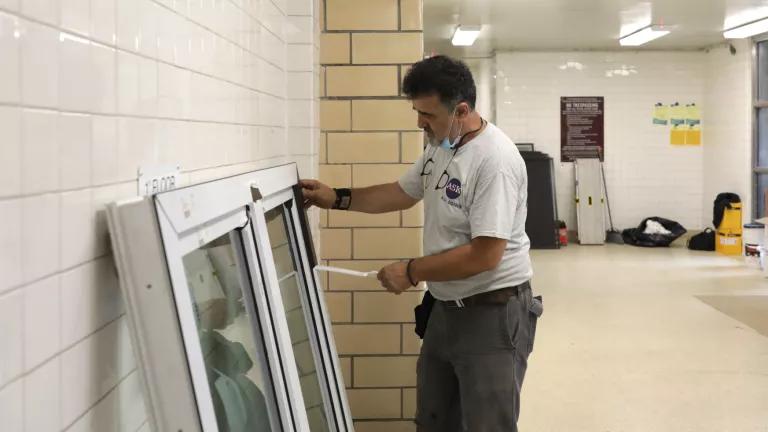NRDC and Partners Sue Over Energy Department’s Not-So-Bright Attack on LED Bulbs
The agency’s latest rollback would keep energy efficiency standards for household bulbs stuck in the past, taking a toll on people’s wallets—and the climate.

The agency’s latest rollback would keep energy efficiency standards for household bulbs stuck in the past, taking a toll on people’s wallets—and the climate.
NRDC, along with other environmental and consumer protection groups and a number of state attorneys general, sued the U.S. Department of Energy today for its illegal rollback of energy-saving light bulb standards that were set to go into effect in 2020—standards that would affect 2.7 billion sockets in the United States, saving consumers and businesses $12 billion by 2025.
The lawsuit centers on a variety of bulbs led by four categories of common bulbs: three-way; flame- or candle-shaped; globe-shaped versions commonly used in bathroom vanities; and reflector models installed in recessed cans and track lighting. It argues that the move violates anti-backsliding provisions that bar the Energy Department from weakening existing standards. (Separately, the Energy Department has announced it does not plan to update the standards for the regular, pear-shaped bulbs in America’s homes and businesses on January 1. NRDC is filing opposing comments with the agency, but that is not part of today’s lawsuit.)
“It’s not only illegal to backtrack on energy efficiency standards,” says Kit Kennedy, senior director of NRDC’s Climate & Clean Energy Program, “but the United States will become the dumping ground for inefficient incandescent and halogen models already banned in Europe and being phased out by countries around the world.”
Inefficient incandescent and halogen light bulbs waste nearly 90 percent of the energy they emit as heat rather than light. The upcoming standards would phase out these inefficient models in favor of far more efficient versions like LEDs, which not only keeps more money in people’s pockets but also helps curb climate-damaging pollution.
And it’s about time: President G.W. Bush signed legislation that was passed by a bipartisan Congress and supported by the lighting industry in 2007 to phase out incandescent and halogen bulbs. The legislation also required the Energy Department to periodically review the lighting market to see whether bulbs originally exempted from the law should become subject to the lighting efficiency standards. With that, under the Obama administration, the agency justified adding the types of bulbs that are at issue in this lawsuit.
“It’s outrageous that the Department of Energy turned its back on the law passed by a bipartisan Congress and supported by industry more than 12 years ago to ensure our lighting is as energy efficient as possible,” Kennedy says.
Opposed by nearly 64,000 public comments at the time of its proposal, the agency’s rollback could now cost the average U.S. household an additional $100 per year and cost the climate an additional 25 power plants’ worth of extra electricity annually.



